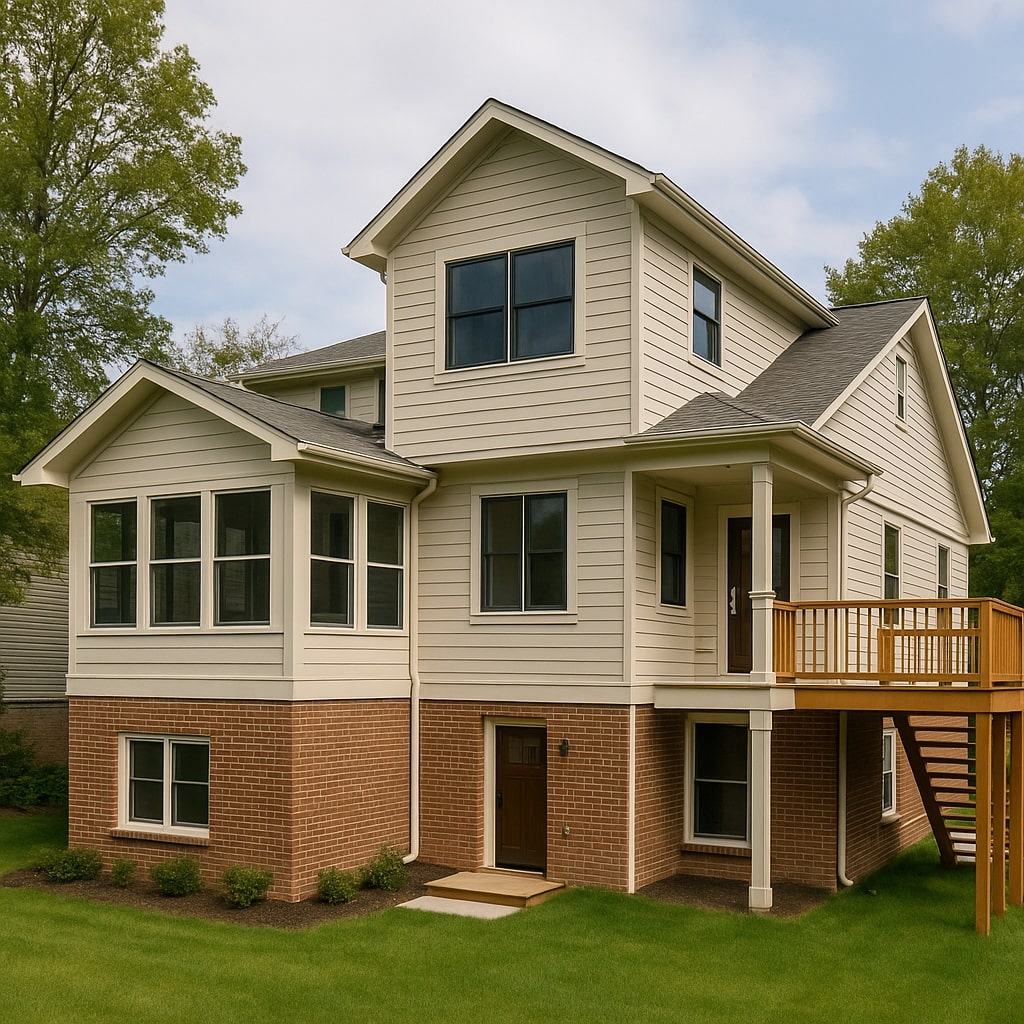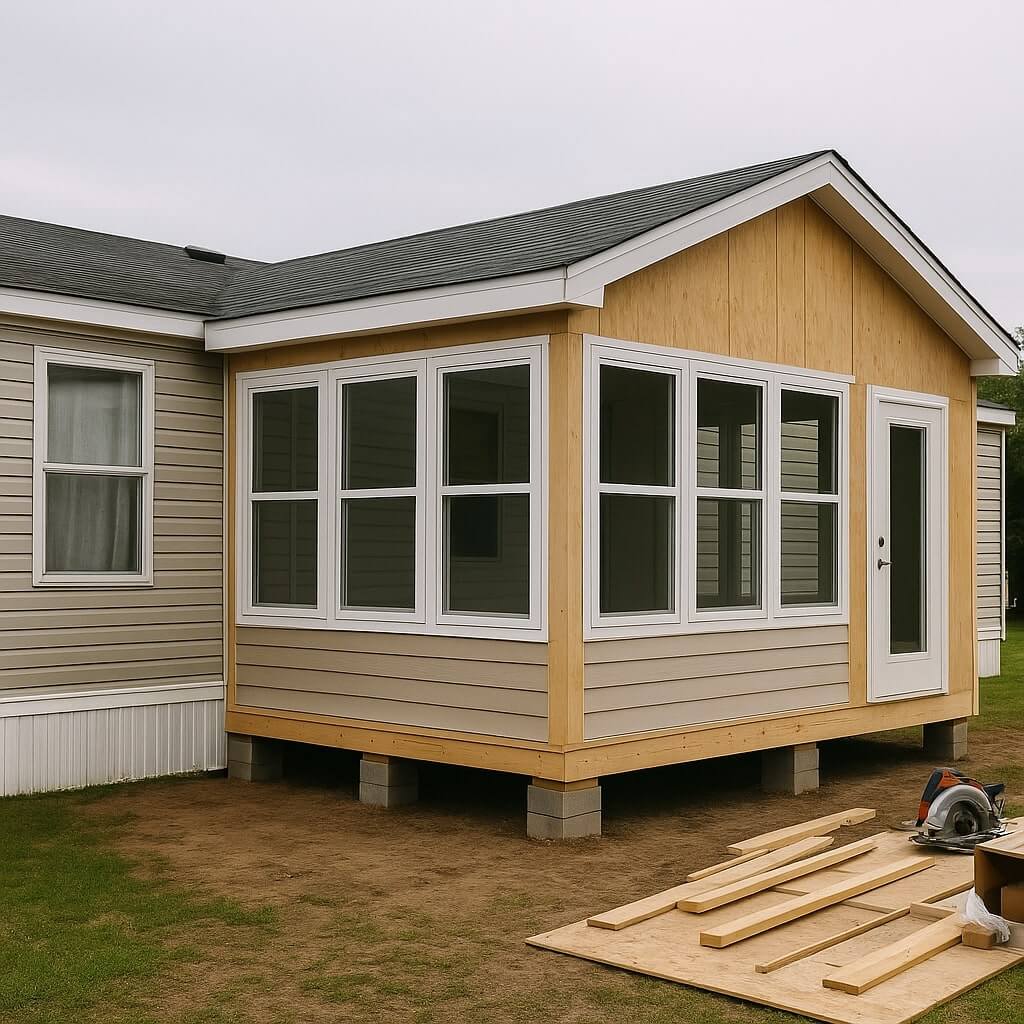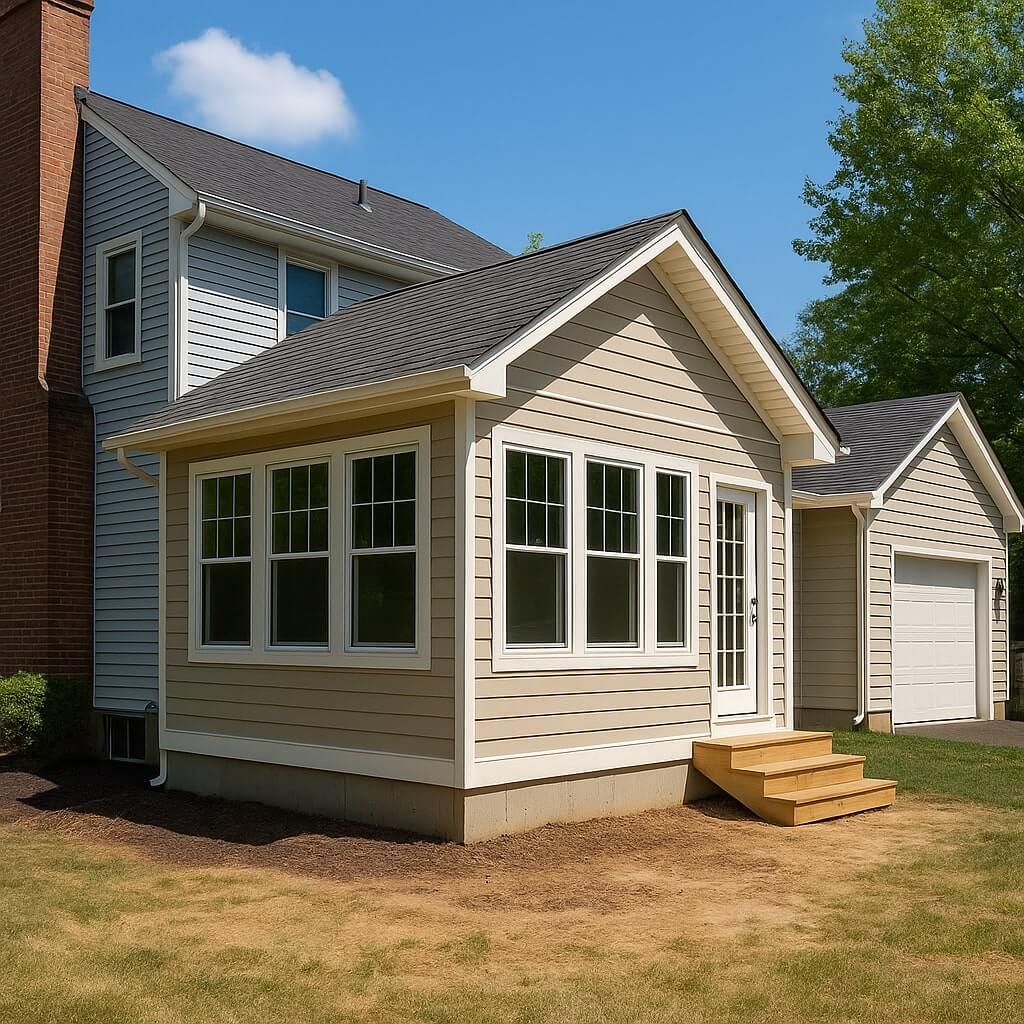Adding space to your home is exciting—but ensuring your home addition looks natural and aesthetically pleasing starts at the top: the roof line. A mismatched or awkward roof structure can ruin curb appeal and even cause structural issues. That’s why selecting the right roof lines for home additions is a critical design step.
This guide covers the most common roof line types, how to match them with your existing home, and what to consider when designing a seamless transition between old and new spaces.
What Is a Roof Line in Home Design?
A roof line refers to the outline or shape of a roof as seen from the street or side. It’s the visual boundary created by the slopes, ridges, and edges of your roof structure. When adding to a home, maintaining a consistent or complementary roof line enhances architectural integrity and resale value.
Popular Roof Line Styles for Home Additions
1. Gable Roof Additions
A classic choice for many additions, the gable roof features two sloped sides that meet in a ridge. It’s perfect for second-story additions or rear extensions.
Pros:
- Easy to match existing gables
- Allows for attic space or vaulted ceilings
2. Shed Roof
This single-slope roof style is ideal for sunrooms, porches, or bump-out additions. It’s cost-effective and suits both traditional and modern homes.
Best for:
- Smaller additions
- Homes with lower existing roof pitches
3. Hip Roof Additions
A hip roof has slopes on all sides. This style is more complex but offers strong wind resistance and a refined look.
Great for:
- Large or multi-room extensions
- Matching existing hipped roof homes
4. Flat Roofs
Flat or low-slope roofs are commonly used for modern-style home additions or second-story decks.
Advantages:
- Modern aesthetic
- Potential for rooftop use (e.g., terrace or solar panels)
5. Dormer Roofs
Perfect for second-story additions or attic conversions, dormers extend out of the existing roof line to add headroom, light, and space.
Works well for:
- Cape Cod or Colonial-style homes
How to Match Roof Lines with Existing Homes
When planning your home addition, a consistent or complementary roof line ensures architectural harmony.
Consider These Key Factors:
- Pitch: Match the angle of the new roof to your existing one when possible.
- Material: Use the same or similar roofing materials for cohesion.
- Scale & Proportion: Keep new roof heights in proportion to the original.
- Architectural Style: Don’t mix a modern shed roof with a colonial gable without thoughtful integration.
Design Tips for Seamless Roof Additions
- Use a Roof Designer or Architect: Professionals can render roof line plans that blend naturally.
- Break Up Long Lines: Use multiple slopes or dormers to prevent flat or awkward transitions.
- Add a Roof Tie-In: Connect new and old roof planes with flashing or seamless ridge caps.
- Consider Overhangs and Eaves: Matching these details enhances consistency.
Cost Considerations for Roof Line Changes
Roof line changes significantly affect the cost of home additions. Complex roof styles like hip or gambrel cost more due to extra labor, materials, and design considerations. Flat and shed roofs are generally more affordable.
Average Roof Addition Costs (USD):
- Shed roof: $4,000 – $8,000
- Gable roof: $6,000 – $12,000
- Hip roof: $10,000 – $18,000
- Dormer roof: $3,000 – $10,000 (depending on size)
Why Roof Line Design Matters for Resale Value
A poorly integrated roof line can hurt resale appeal, while a seamless roof can boost both curb appeal and home value. Buyers appreciate additions that look like they were always part of the home—not afterthoughts.
FAQs: Roof Lines for Home Additions
A gable roof is the most versatile and popular choice. It’s easy to build and matches many architectural styles.
Yes, but it should complement the existing roof. Consulting with an architect helps ensure a smooth visual and structural transition.
In most areas, yes. Always check with your local building department before starting construction.
Use the same brand, color, and material if possible. If not, choose a complementary shade and texture.
Side and rear additions give more flexibility. You can often use a shed or flat roof without affecting the front elevation.
Conclusion: Choose the Right Roof Line for Lasting Impact
Your home addition’s roof line is more than just a cover—it’s the architectural bridge between new and old. Whether you opt for a gable, hip, dormer, or shed roof, proper planning and execution are key to visual harmony and long-term value.




